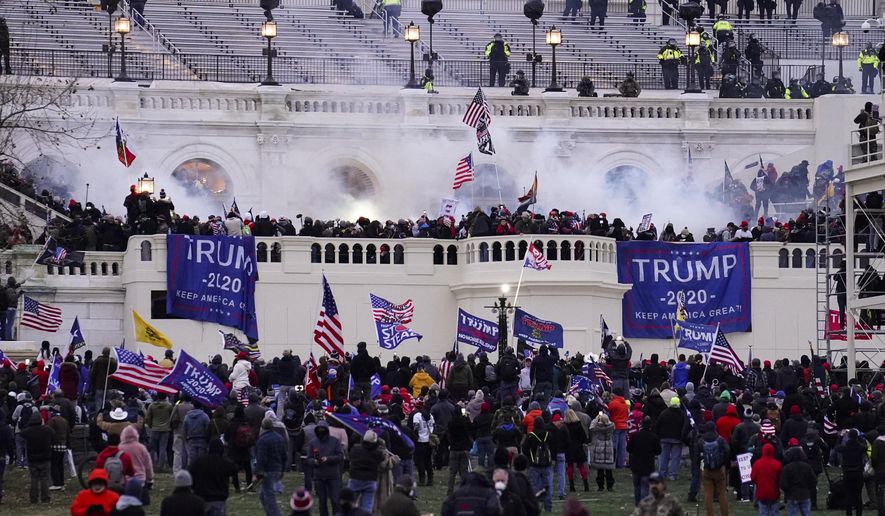Newly revealed documents show that law enforcement officials were concerned that far-left activists would “attempt to blend in” with Trump supporters at Jan. 6 protests and “cause trouble especially around cameras.”
In a Jan. 5 email, a U.S. Capitol Police Intelligence and Interagency Coordination Division official alerted several federal and police agencies to a Twitter post about Antifa and Black Lives Matter protesters from Baltimore and Washington “already busing people in to disturb January 6th.”
The email went to the U.S. Park Police, Department of Homeland Security, Department of Transportation and Washington Metro Police Department. It was among 300 pages of U.S. Park Police records related to the Jan. 6 riot that were obtained by Judicial Watch through a Freedom of Information Act lawsuit.
“Orders given to dress like ‘MAGA’ blend in cause trouble especially around cameras,” read the Twitter post that was shared by the USCP intelligence official. “At night arson has been ordered. All to be blamed on Trump supporters attending.”
In the email, the official told law enforcement colleagues that the post had received “multiple replies” saying that BLM and Antifa activists “will wear MAGA hats backwards, wear camouflage and attempt blend into the MAGA crowd.”
During and after the Jan. 6 riot, news outlets including The Washington Times reported that activists from leftist organizations had been present in the crowd that stormed the Capitol.
While law enforcement identified far-right extremists in the crowds, no Antifa or other far-left activists were identified. The Times issued a correction for its erroneous report.
However, the emails confirm that the possibility of agitation by leftist activists was on the radar of law enforcement officials as they prepared for the protests. In the emails, the officials do little to assess the credibility of the tweet.
“This guy’s Twitter says he’s a US Senate candidate for MD in 2022,” the email reads. “He retweets a lot from Lin Wood.”
The account that posted the tweet referenced by the officials has since been suspended.
Law enforcement officials were also concerned about the possibility of counterprotestors clashing with pro-Trump demonstrators on Jan. 6, according to a U.S. Park Police Incident Briefing the day before.
The incident briefing note, which also was obtained in the FOIA lawsuit, outlines several rallies scheduled to take place throughout the day and details the number of anticipated attendees for each rally gleaned from social media posts.
The report identified the Women for America First’s “March for Trump” featuring President Trump and members of his family as keynote speakers as a potential flash point.
“This group has significant potential to attract counter-protesters, similar to events in November and December 2020,” the report reads.
“Multiple acts of violence have occurred in the downtown Washington, D.C. area during and after similar events hosted by the same organizer.”
A Capitol Police spokesperson told The Times that the email exchange alone does not indicate that the officials found the claim credible. “Intelligence and law enforcement agencies across this region receive a lot of tips about social media chatter,” the spokesperson said.
“There is no indication the information in that online chatter ended up being credible.”
“We don’t have proof ANTIFA was on-site on 1/6,” the spokesperson said. “ANTIFA was not among the dozens of people who were arrested on 1/6.”
Utah resident John Sullivan, who sold riot footage from inside the Capitol to new outlets for upward of $35,000, was later arrested for being inside the Capitol. He has described himself as a Black Lives Matter supporter and founder of Insurgence USA, which Utah-based Deseret News described as “a social justice group … that calls itself anti-racist and protests police brutality.”
Mr. Sullivan says he was acting as an independent journalist on Jan. 6 and has denied any affiliation with Antifa. Prosecutors noted that he was not affiliated with a news outlet and did not have press credentials on Jan. 6.
• Joseph Clark can be reached at jclark@washingtontimes.com.




Please read our comment policy before commenting.